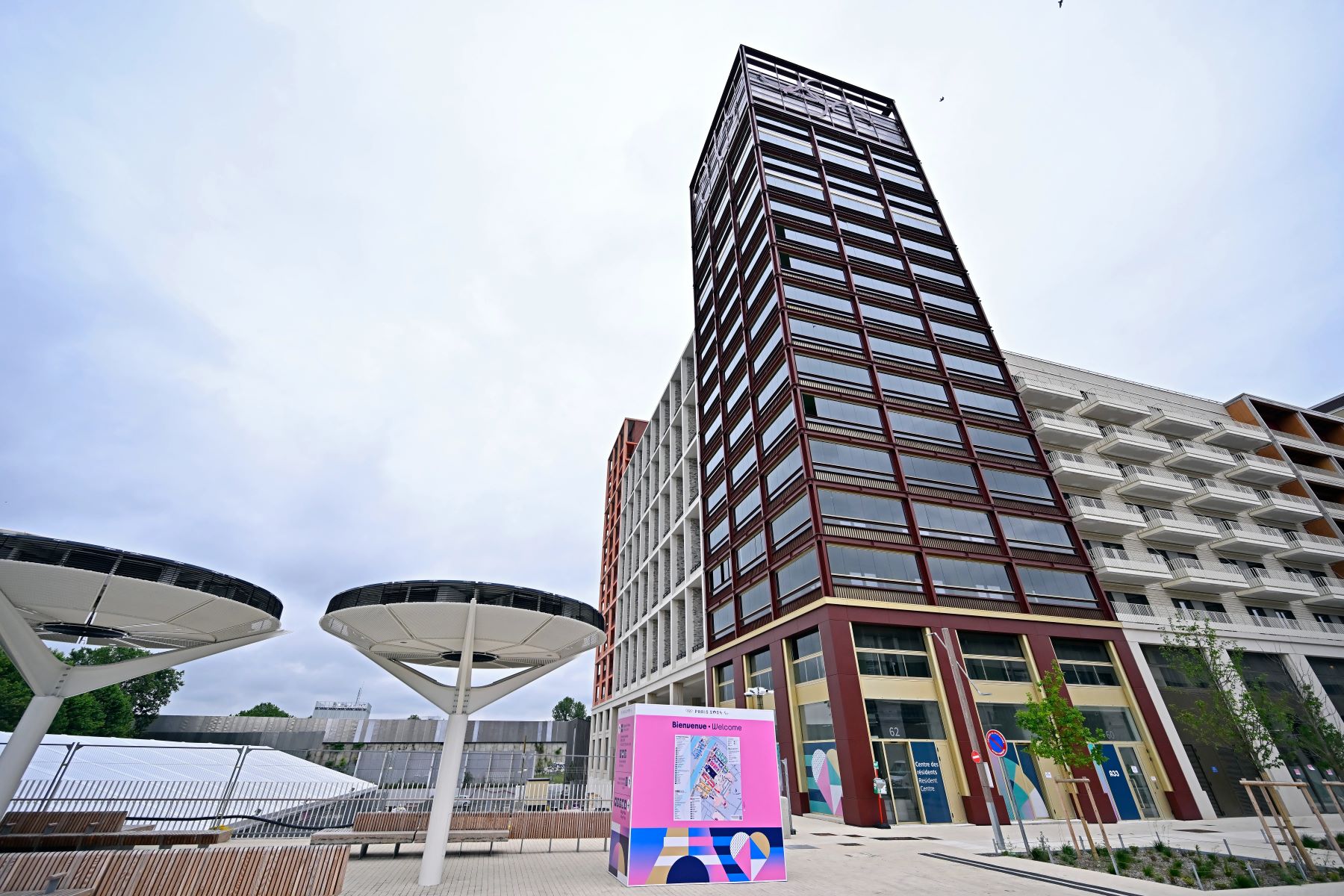On Sunday, August 18, the Athletes' Village of the Paris 2024 Paralympic Games has opened its doors. Ahead of this deadline, it is preparing to welcome the world's best Para athletes. Laurent Michaud, its director, explains to Olympics.com what adaptations are currently being made.
The Paris 2024 Athletes' Village has been transformed. While the last tenants of the Olympic period left the premises, the first of some 180 Paralympic delegations arrived on site on Sunday.
During the design and construction of the Olympic and Paralympic Village, several elements were already designed to accommodate athletes with reduced mobility.
“Public spaces, roads, sidewalks and crosswalks have all been designed to allow wheelchair users to pass through. This complies with the universal accessibility standards required for new urban developments, explains Laurent Michaud, Village Manager. Thanks to this, we have very little work to do on these areas."
A few adaptations to make
In the outdoor areas, the main task is to mark the few jumps that are not very visible and dangerous for athletes. “We put yellow and black stripes to identify them because they can be stumbling hazards”, confirms the site manager. In addition, he adds, “the City of Paris water fountains have been adapted and set at heights that allow wheelchair users, guide dogs and assistance dogs to access them”.
Also outdoors, ramps had initially been built in all temporary areas (main entrance, delegations' welcome center or bus station) to avoid having to do so during this transition period.

The Look of the Games, on the other hand, needs little adaptation, since it was originally installed either with the Olympic rings and Agitos, or without either emblem. “All we need to do is replace the large rings in several places in the Village with the Agitos”, adds Laurent Michaud.
A PRM bathroom in every apartment
As far as the apartments in the Village are concerned, only those equipped with at least one PMR bathroom (adapted for people with reduced mobility) - accessible to Paralympians - are used. We need 9,000 beds compared with 14,000 during the Olympic period, which has enabled us to concentrate the Village and not use the buildings on Île-Saint-Denis, for example, reveals Laurent Michaud. We're adding temporary grab bars in the washrooms, as well as wheelchairs in the showers to facilitate transfers.”
The look of the rooms, meanwhile, is changing visually as the Olympic athletes have left the premises with their comforters. “It was a gift so we're replacing them by putting them on the Paralympic side. So the beds are going from blue to green”, notes the Village Manager.
1,300 technical officials also housed in the Paralympic Village
The services offered in the Paralympic Village remain exactly the same as for the Olympic Games. The hairdresser will still be present, as will the mini-market, the restaurant, the laundries, the Fitness Centre and the Village Club. "We just need to modify certain counter heights to improve accessibility, particularly in the restaurant, explains Laurent Michaud. The toilets were already accessible, but the buffet heights have been revised and about one chair in three has been removed to enable athletes to slide under the tables with their wheelchairs.”
It's also worth noting that the training studios will continue to be part of the Paralympic Games, offering training in Wheelchair Fencing, Sitting Volleyball, Para Taekwondo, Para Powerlifting, Wheelchair Basketball and Goalball.
Finally, it's not just the athletes and staff who will be accommodated in the Paralympic Village, as it has been decided that the 1,300 technical officials will also be housed there. “Of course, for obvious reasons, their flows will be separate from those of the athletes”, concludes Laurent Michaud.